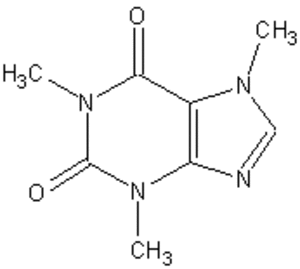In the post-war era, Japan became a major industrial country. In part, this was due to the ethic of production before people. In 1932, in the small fishing village of Minamata, the chemical company Chisso decided to use their plant to manufacture acetaldehyde, used to produce plastics. A byproduct of this process was methyl mercury, which Chisso dumped liberally into Minamata Bay. Mercury is a heavy metal which normally is not part of the food chain. In Minamata Bay, the methyl mercury ended up in the fish in deadly concentrations. Since the fish from the bay constitute the bulk of the diet for the people in the village, the affects of mercury poisoning were soon visible. In cats, which also ate the fish, the affects of mercury poisoning showed up earlier than humans. The cats started behaving oddly, dancing in the streets, falling over dead and throwing themselves into the bay. After humans came down with severe symptoms, the disease was nicknamed Cats Dancing disease(Breton 1998).
In humans, the disease manifests itself as nerve damage. Victims’ vision becomes limited, they are unable to walk, and even simple tasks became impossible. However, in the beginning, there weren’t many people who had the symptoms. As time progressed, more and more people became afflicted. Soon, the entire community was aware of this new sickness. The afflicted were shunned for fear of it being communicable. In traditional Japanese culture, those who are sick are sometimes seen as deserving the sickness. The determining of the cause of the disease did not occur until 1968, long after the poisoning wreaked havoc on the lives of those in Minamata(Breton 1998).
One woman, a housewife aspiring to be a writer and poetess, wrote about these people after visiting their homes and watching them attempt to live their lives. She was concerned about their plight, and realized that for anything to be done, they must receive national attention. Her first book, Cruel Tales of Japan – Modern Period , brought attention to the first outbreak. But soon after that, Chisso paid the victims a “consolation” payment on the terms that they never ask for money again. It seemed as though the problem had went away. Then, in 1965, the affliction appeared in nearby Niigata. This time, Ishimure jumped into action, writing another book and becoming involved in several organizations dedicated to helping the victims of Minamata disease. She became very active for the cause of the victims, including writing petitions for the organizations to present(Breton 1998).
The main reason this situation became so severe was that 60% of the people of Minamata worked for Chisso. It was a mainstay of the community, and no one really could afford to believe that this cornerstone was the cause of such horrible things. Chisso certainly didn’t open itself for blame. In 1969, Chisso’s physician became interested in the problems of the villagers. He did his own experiments and found that the cause was definitely the mercury effluent from the company. He presented his findings to the company, along with the suggestion that they discontinue putting mercury into the bay. His research was terminated and his documentation was burned. Later, when a university came to the same conclusion as Dr. Hosokawa, the company disputed the findings, saying that their own team of experts had not validated the facts, when really they had already seen proof from their own physician(Togashi 2003: Breton 1998).
Today, it is suspected that at least 10,000 people were affected with Minamata disease, although only 1,000 have received compensation from Chisso. The bay was recently pronounced safe(Watts 1997). Still, the people of Minamata remember the tragedy that struck their little village.
Bibliography
Breton, Mary. 1998. Women pioneers for the environment. Richmond:Northeastern University Press. 321p.
International Campaign for Justice in Bhopal. 2003. Similar Industrial Tragedies: The poisoning of Minamata, Japan: Dioxin poisoning in Seveso, Italy. http://www.bhopal.net/oldsite/oldwebsite/similar.html . Visited Feb. 9, 2005.
Togashi, Sadao. 2003. The Relationship between Inquiry into the Cause of Minamata Disease and Social Action preventing the Epidemic. http://www.dai-h.com/minamata/MINABG1.html . Visited Feb. 9, 2005.
Watts, Jon. 1997. Minamata bay finally declared free of mercury. Lancet. 350(9075):422


